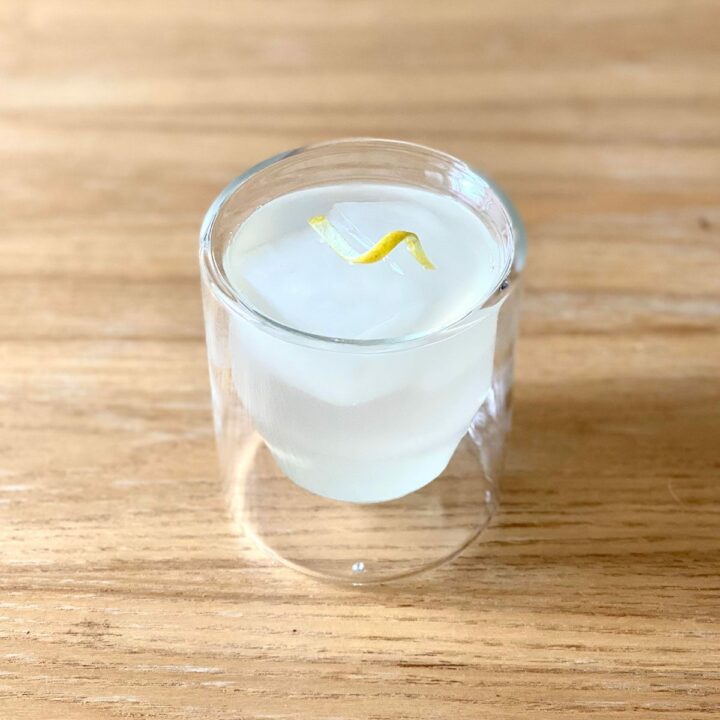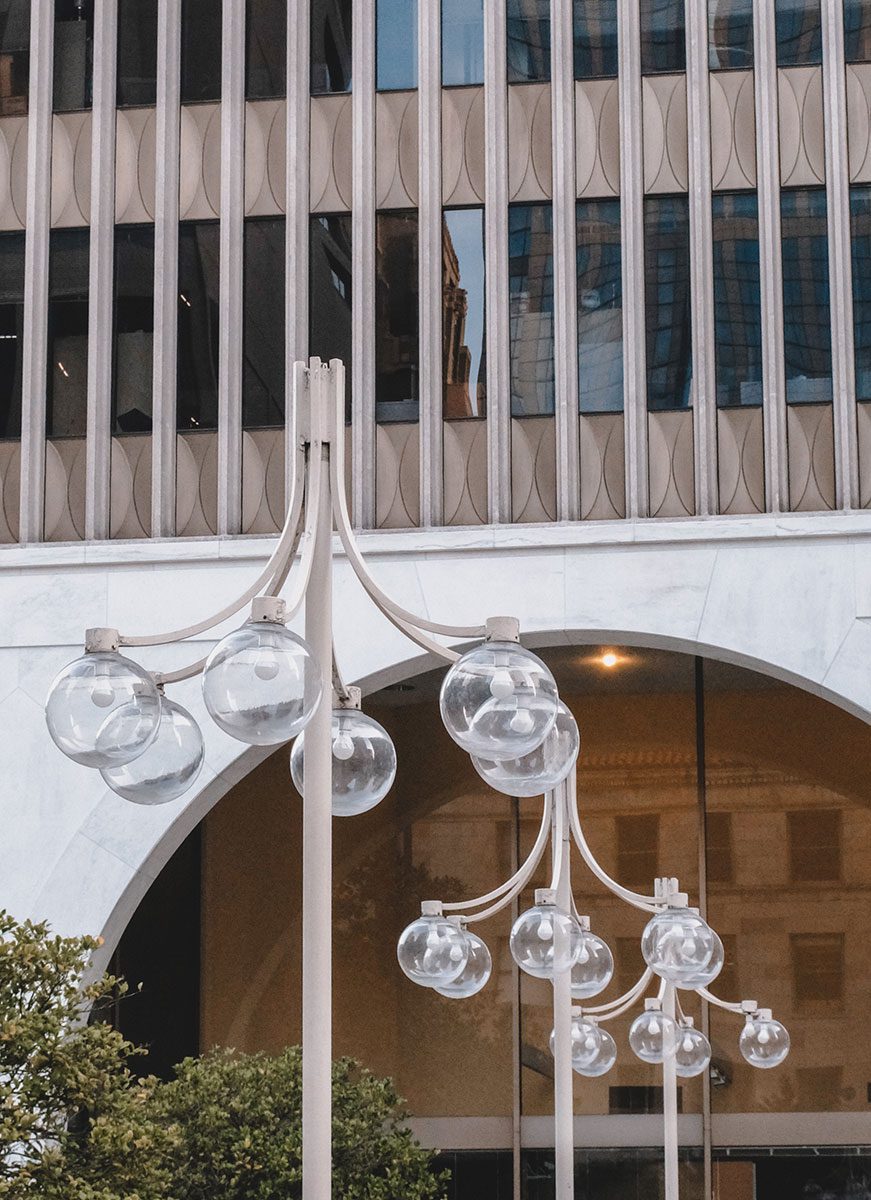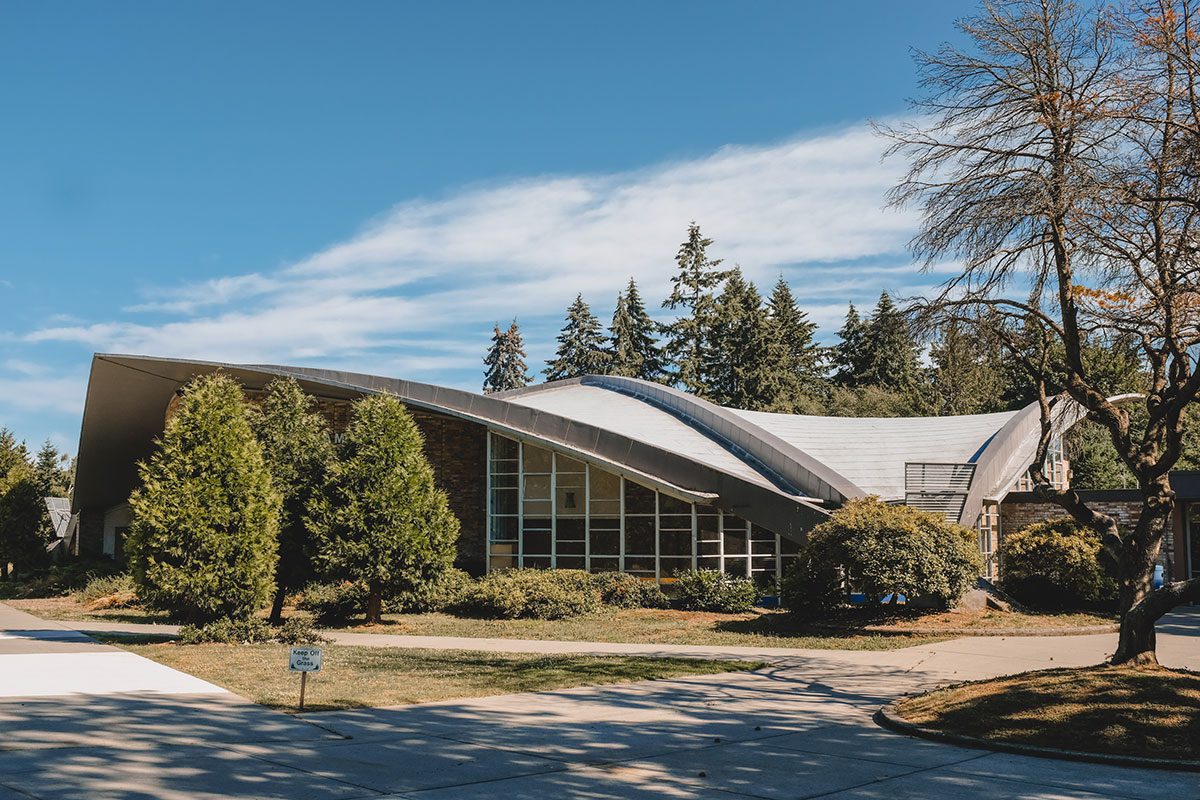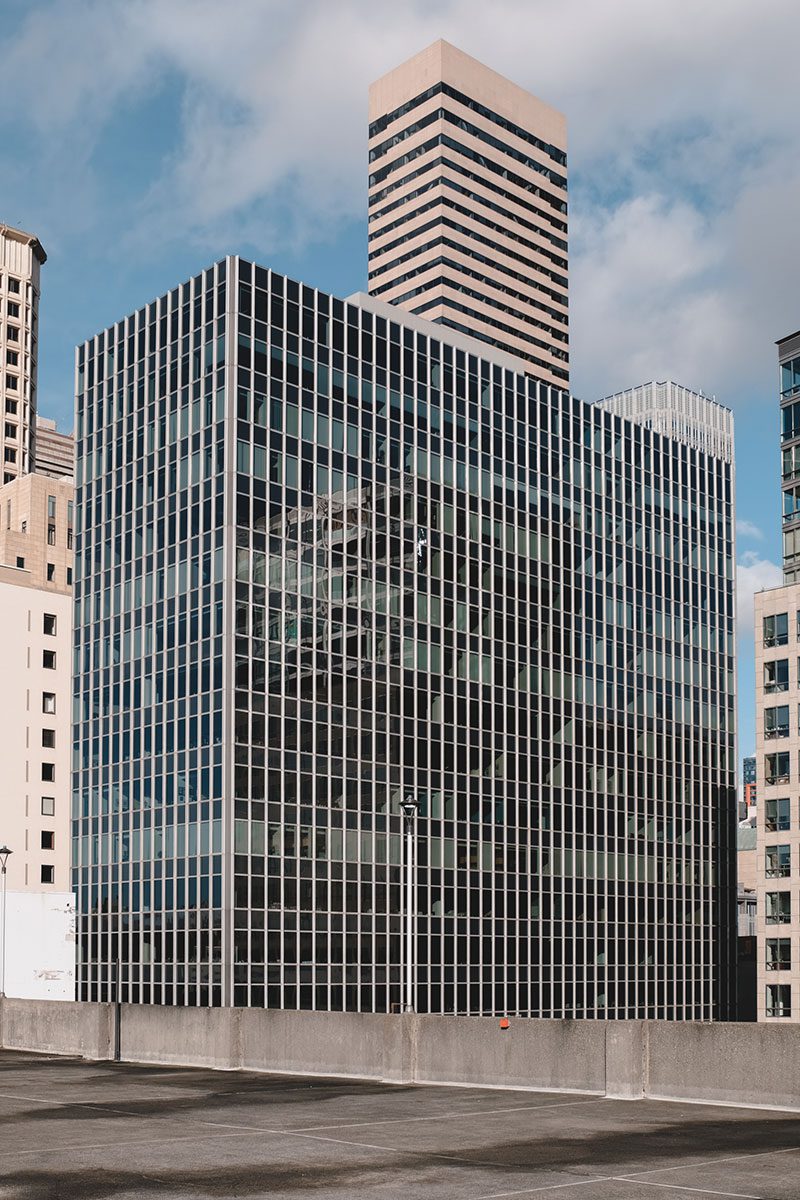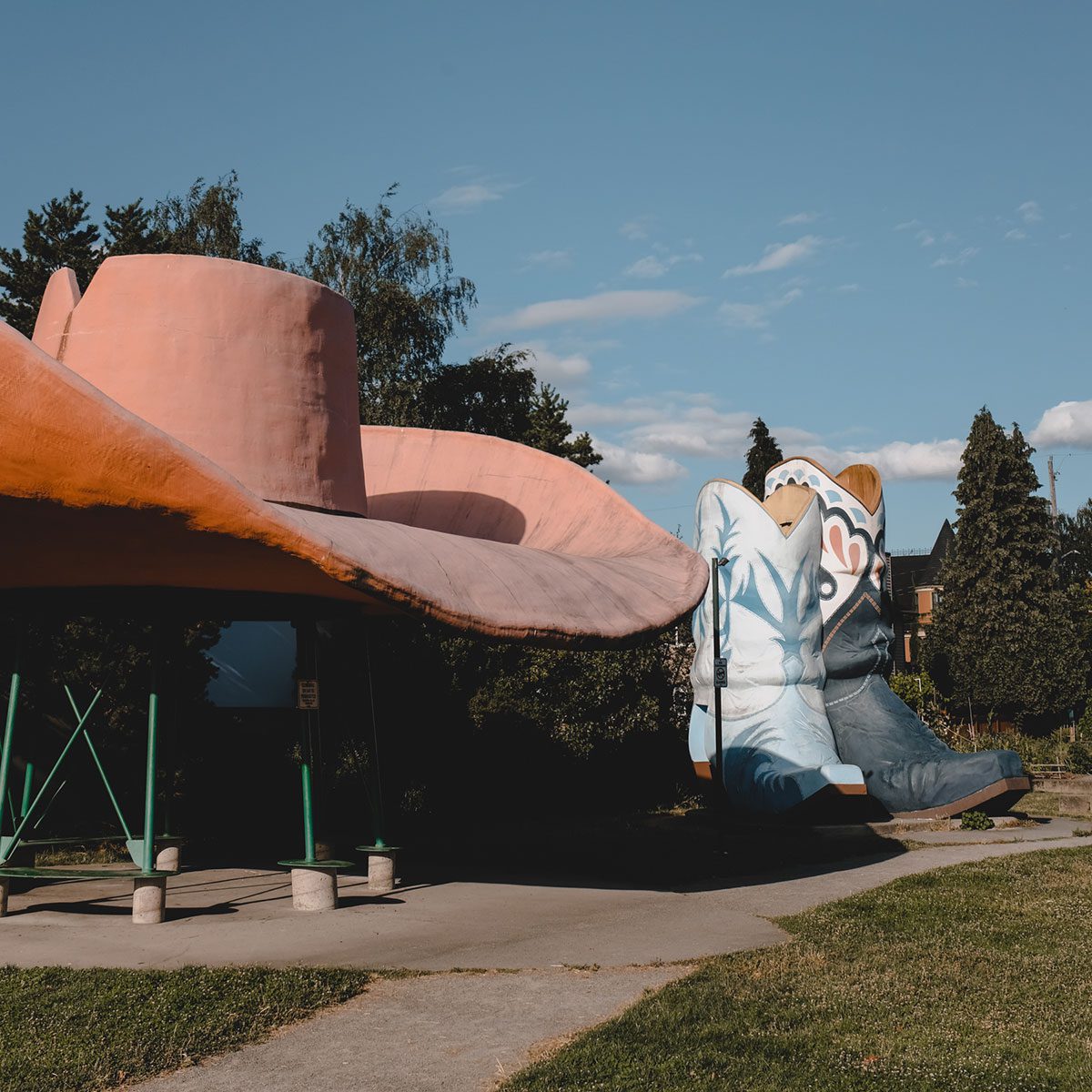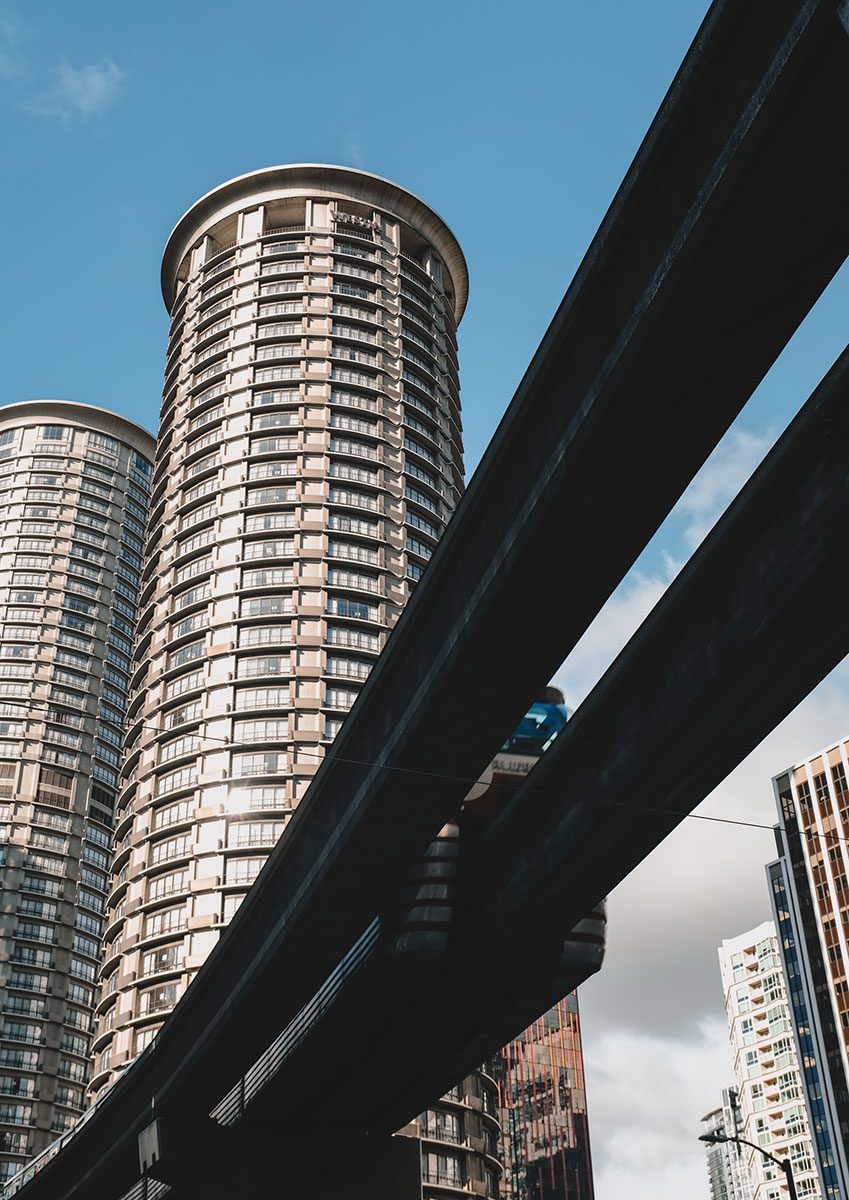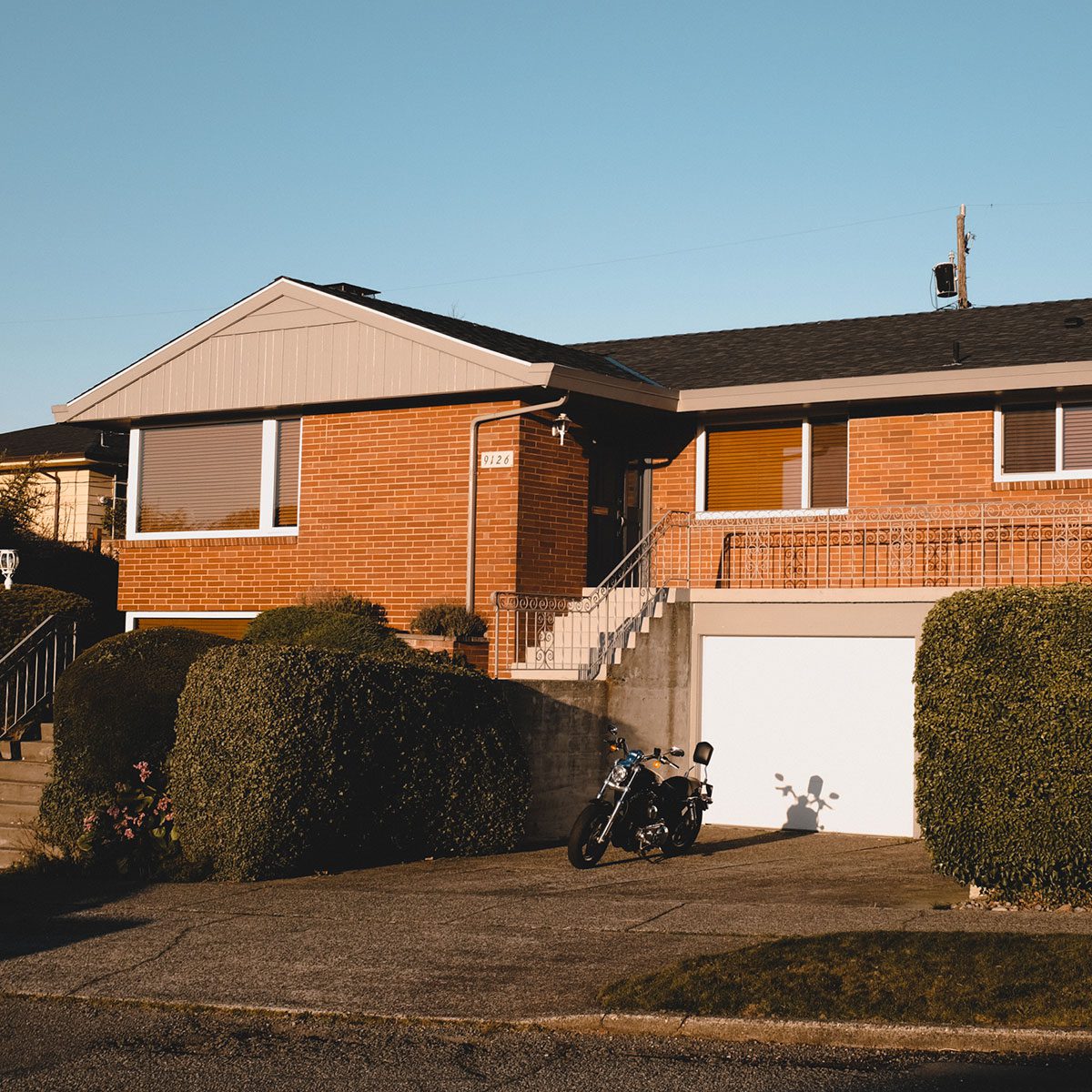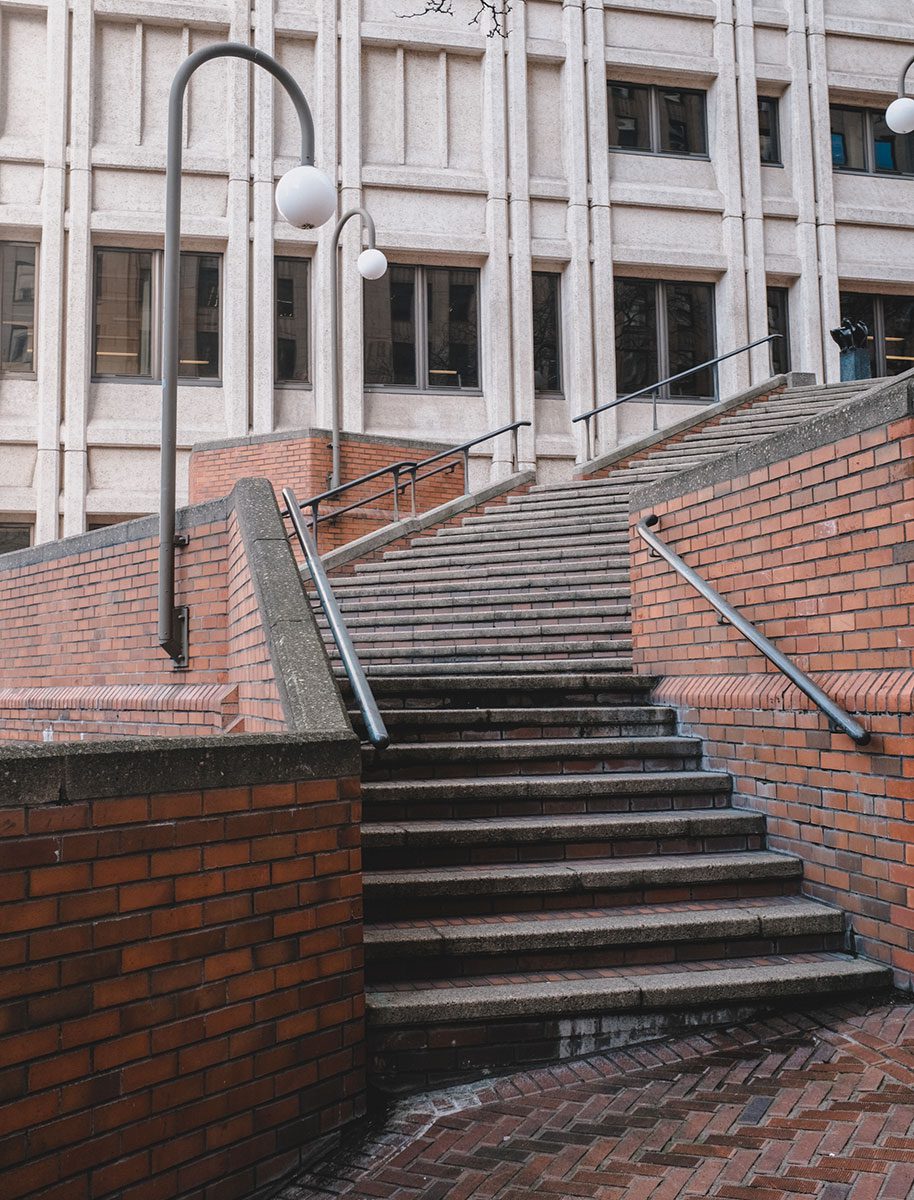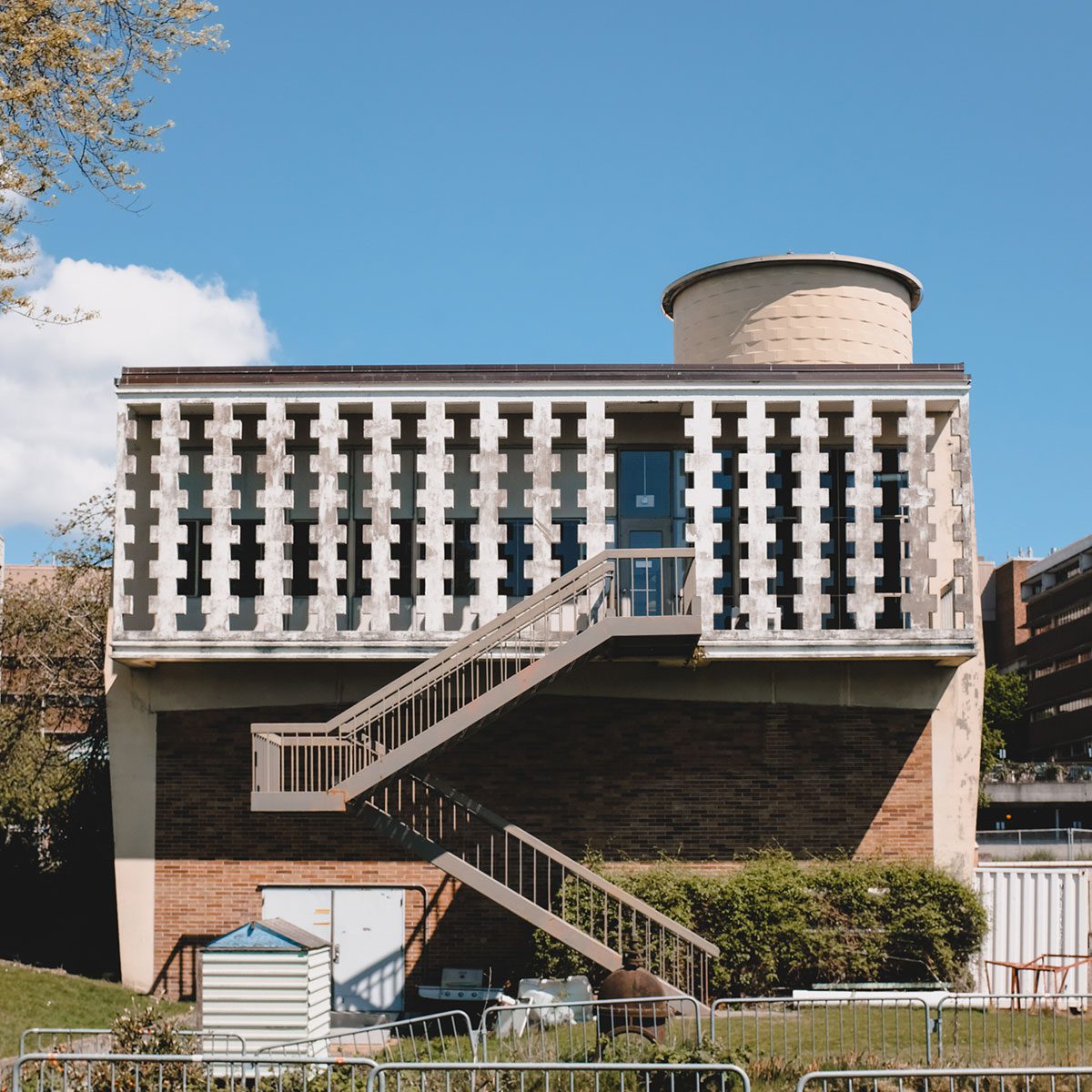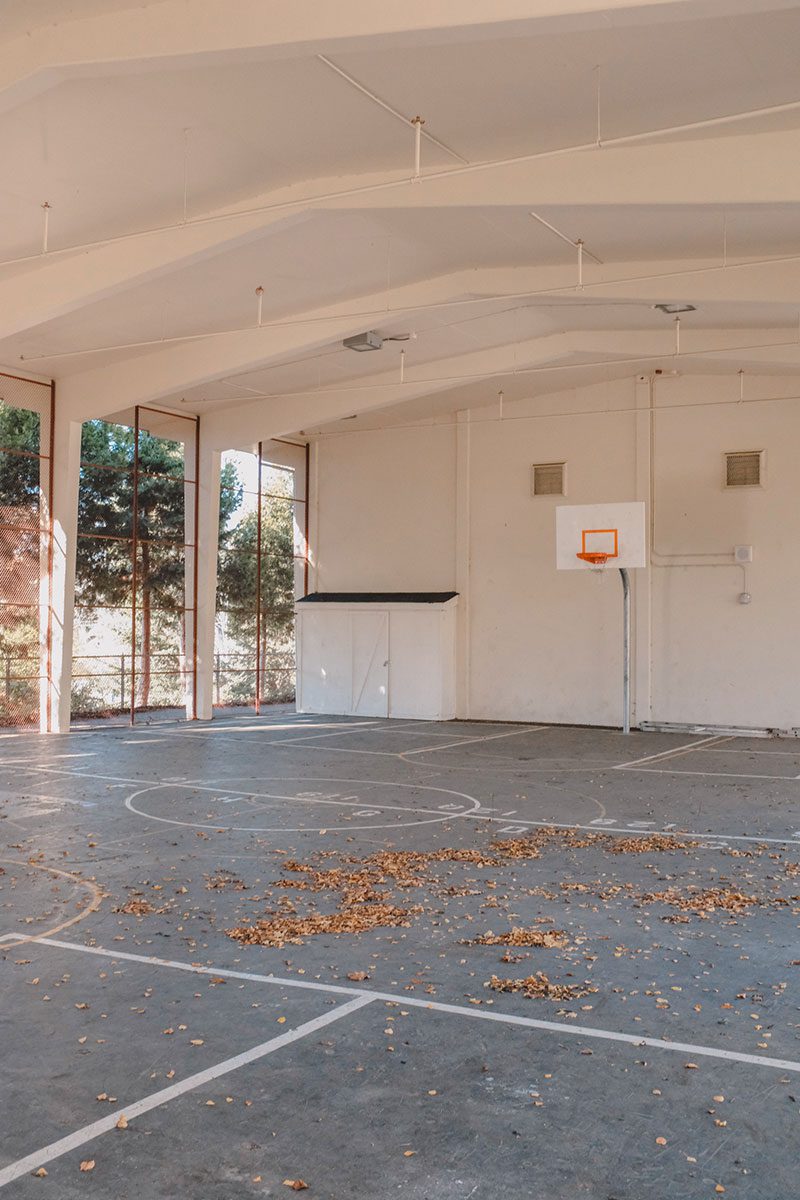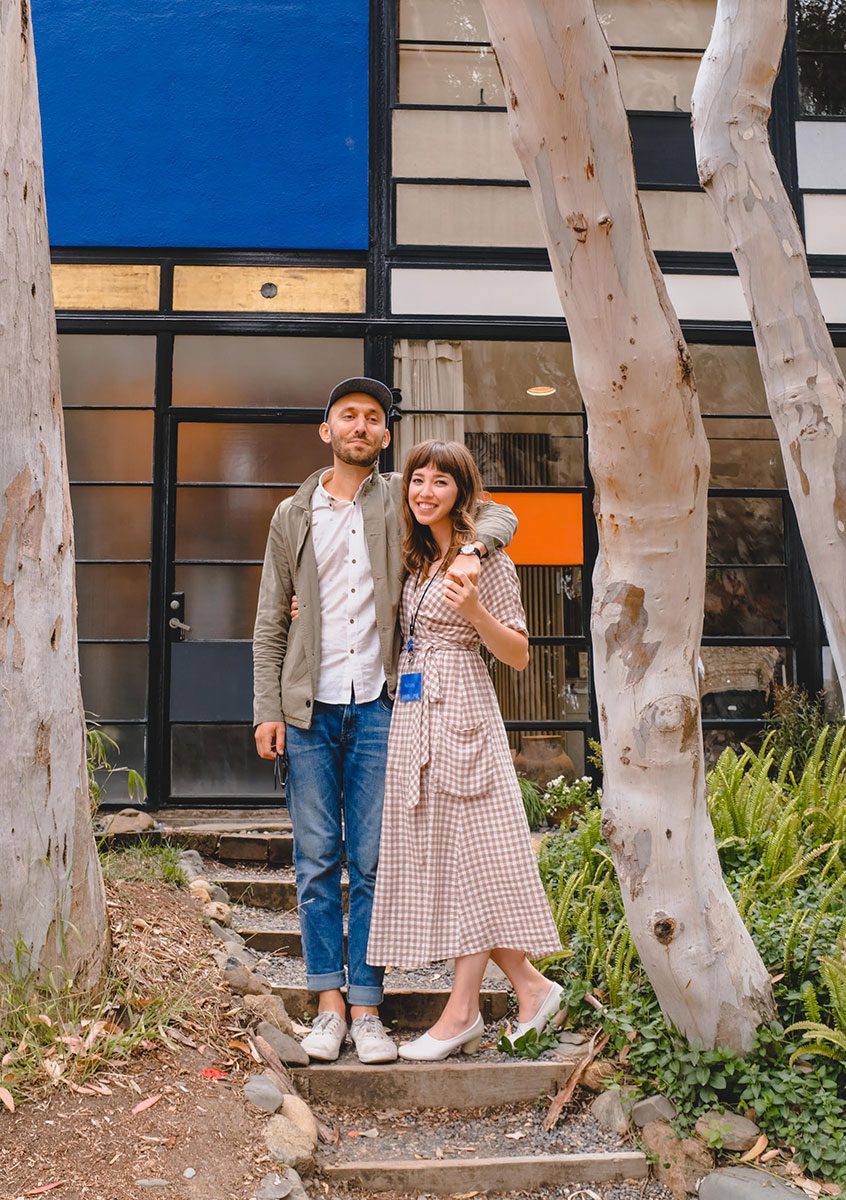Part 3 of our Summer Series :
Seattle Modernist Architecture Tour – compiled by Zack Bolotin and Kelsey Rose
Modernist architecture is spread out all over the Seattle area in a variety of styles. Some sites are obvious staples of our skyline and others are tucked away in the trees. We’ve compiled a list of mostly lesser-known sites in a few different pockets of the city that are still accessible in some capacity during this strange (and limiting) summer.
Downtown
We share a big obsession with the architect Minoru Yamasaki. He is most known to the general public for building the original World Trade Center towers, but it isn’t widely known that he was born and raised in Seattle! This connection may have brought him back to our city for some very special commissions: the Pacific Science Center for the Seattle World’s Fair, Rainier Tower, and the IBM Building.
Seattle World’s Fair and Key Arena architect Paul Thiry’s 1967 design on 2nd Ave is a beautiful example of a concrete building that dances on the border of Brutalism and New Formalism. Blocks from this is the Norton Building, Seattle’s first modernist skyscraper, and the Henry Jackson Federal Building (which features work by Isamu Noguchi at its base). Closer to South Lake Union and right on the Monorail track, you can find the matching towers of the Westin–one was built in 1969 and the second followed thirteen later. Try to guess which is the original. -ZB + KW
- Thiry Office Building – 1101 2nd Ave. 1967
- Norton Building – 801 2nd Ave. 1959
- IBM – 1200 5th Ave. 1964
- Westin Towers – 1900 5th Ave. 1969 and 1982
- Henry Jackson Federal Building – 915 2nd Ave 1974
University of Washington South Campus
When picturing a walk through the UW campus, one tends to think of Red Square, the cherry blossoms, and Suzzallo Library’s Gothic exterior. But down on Portage Bay, there’s a lesser-known trove of modern buildings. If you park and walk along the water, you’ll be able to find them all.-ZB
- 1510 San Juan Road. Park anywhere near here and walk south along the water
Eastlake
Eastlake includes a pair of buildings constructed by Kirk, Wallace, McKinley & Associates within the two-year span of 1960-1962. The one that will undeniably catch your eye first is the dark grey building with the colored glass on its southern facade. Yes, that glass is original! -KW
Just down the street is the former home of Pacific Architect & Builder, which was designed by Albert Bumgardner and completed in 1960. Its distinct roofline and well-kept construction make it one of my favorites in Seattle. My grandfather, Roscoe Laing, was the vice president of PA&B and closely involved with the building’s design. -ZB
- Office of Kirk, Wallace, Mckinley and Associates 2000 Fairview Ave E. 1962
- Office of Bush, Roed and Hitchings 2009 Minor Ave E. 1962
- Pacific Architect & Builder 1945 Yale Pl E. 1960
Georgetown / SoDo
South Seattle’s working-class and industrial neighborhoods are dotted with mid-century remnants. If you look closely at most of the warehouses, you’ll see plenty of modernist elements in their offices–tall glass, rock walls and glass blocks all down 1st, 4th, and 6th avenues. Georgetown’s famous Hat N’ Boots was originally a service station before relocating to Oxbow Park. Keep an eye out for some beautifully falling apart neon signs through both neighborhoods as well. -ZB
- Hat N’ Boots 6430 Corson Ave S. 1954
- Denny’s 2762 4th Ave S. 1968
- Former US Bank 303 S. Michigan St. 1967
North Seattle Schools
Schools seem like a pretty mundane part of the city’s architecture, but many of them in North Seattle were built during the mid-century era and have impressively survived the years. Northgate Elementary, sharing its namesake with America’s first shopping mall, has a dramatic sloping roof and a very ‘50s mauve and teal color scheme. Northgate and Cedar Park were both designed by Paul Thiry, just like the 2nd Avenue building we took you to downtown. Nathan Eckstein Middle School sports materials and shapes that are so quintessentially modern (and especially International Style): glass blocks, warm-colored bricks, fiberglass panels, a curved glass curtain wall, and doors with porthole windows. -KW
- Eckstein Middle 7452 30th Ave NE. 1950
- Cedar Park Elementary 3737 NE 135th St. 1959
- Ingraham High 1819 N 135th St. 1959
- Northgate Elementary 11725 1st Ave NE. 1956
Olympic Manor
The community of Olympic Manor was developed as the city’s demand for post-war housing ate up a course near the Crown Hill section of Ballard in 1953. Small plots of land were sold throughout the mid- to late-50s with visions of modern-style homes with spacious lawns, wide private streets, and astounding views of the Olympic Mountains and Puget Sound.
It feels impossible to pick certain landmarks from this neighborhood, so our recommendation is to let your curiosities guide you through its curving streets as you admire the collection of asymmetrical roofs, expanses of glass and corner windows, Roman brick, and thoughtfully manicured shrubbery. Thanks to neighborhood restrictions, the area transports us back to 1956; the new cars parked in driveways are the only reminder that we’re the people of the future. -KW
- 1. Entrance: Entrance is at NW 85th Street and 23rd Avenue NW. 1953
